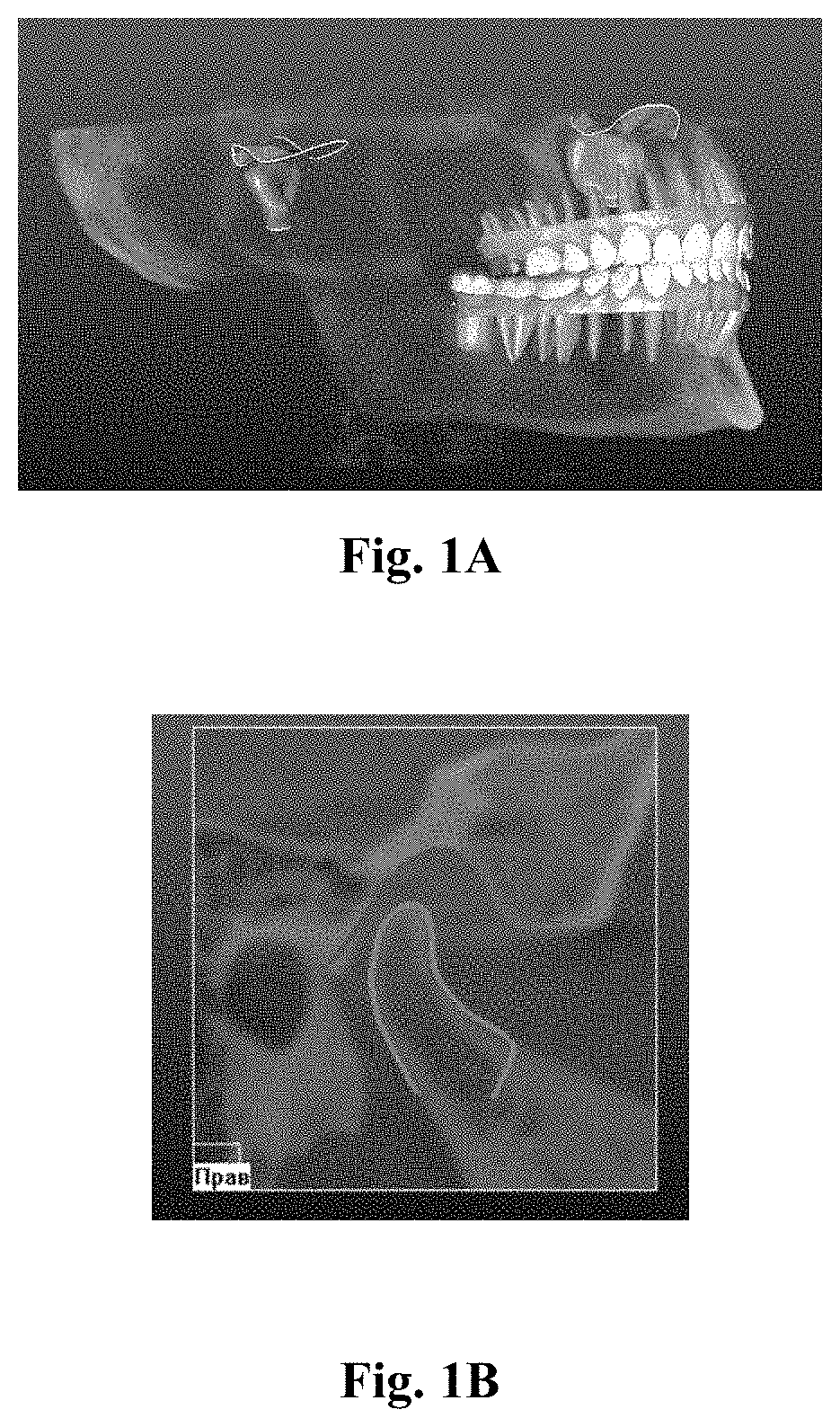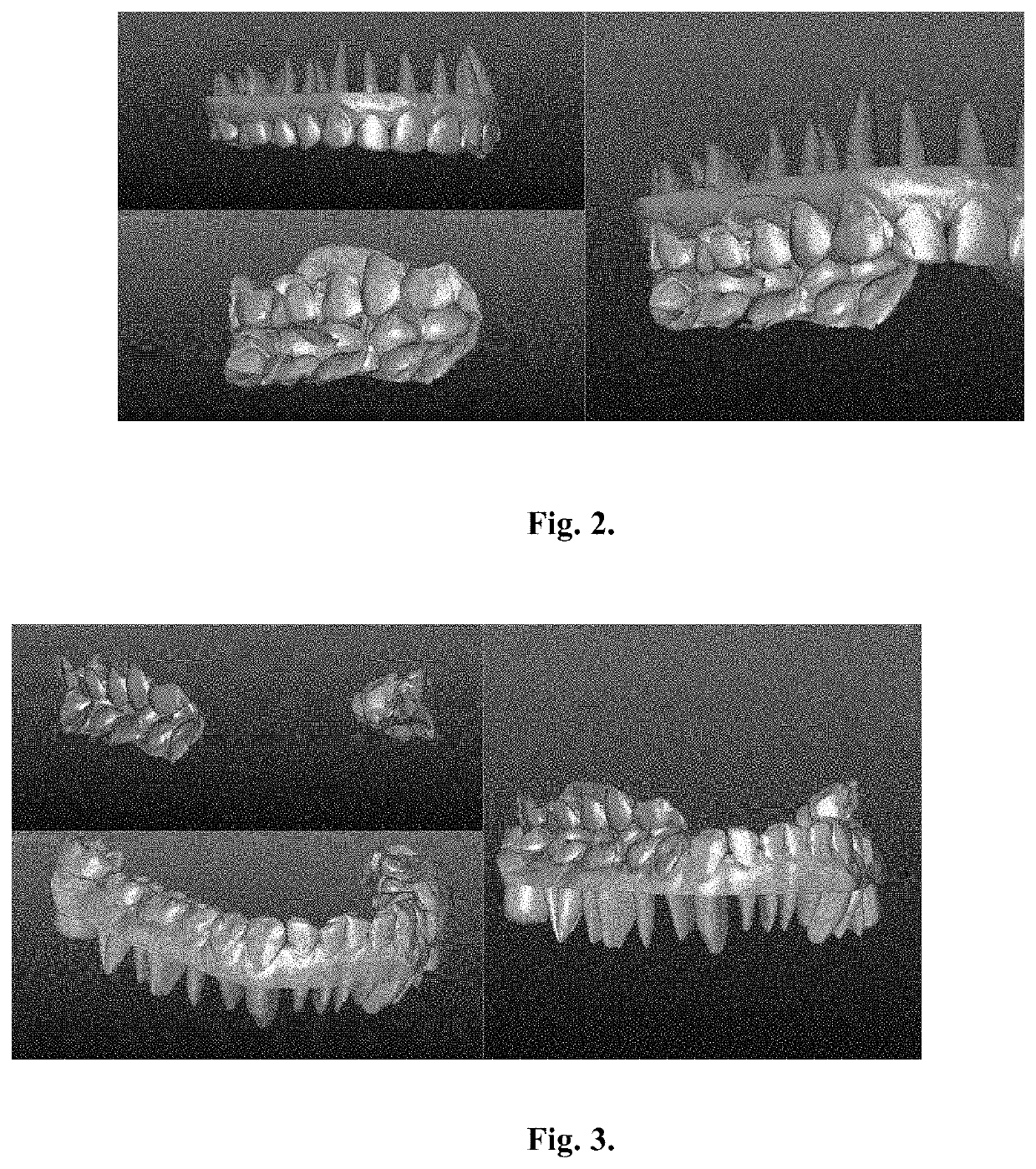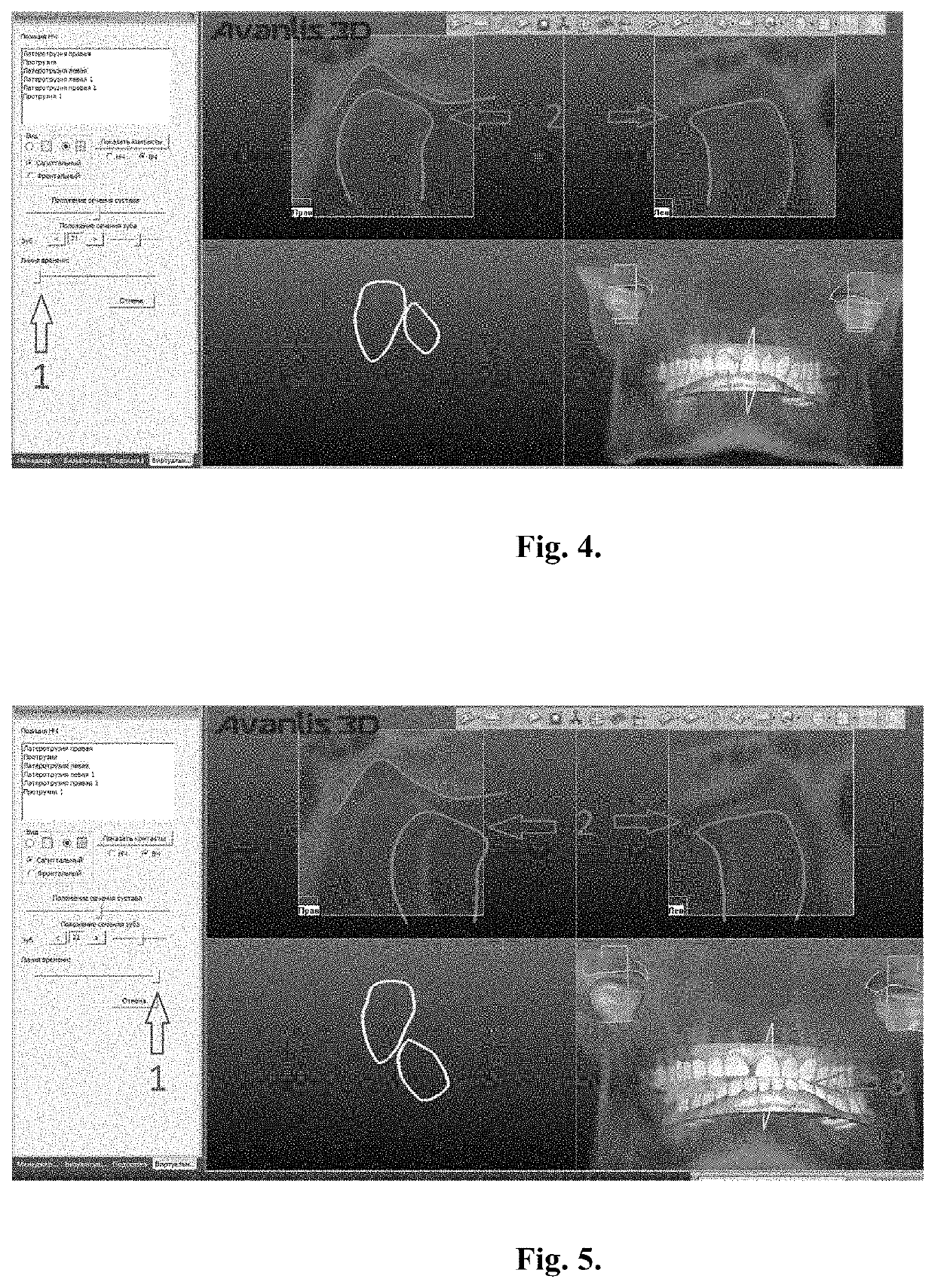Method for using a dynamic virtual articulator for simulating occlusion when designing a dental prosthesis for a patient, and data carrier
a dynamic virtual articulator and patient technology, applied in the field of medical devices, to achieve the effect of reducing discomfort at registration and reducing time expenditur
- Summary
- Abstract
- Description
- Claims
- Application Information
AI Technical Summary
Benefits of technology
Problems solved by technology
Method used
Image
Examples
example
[0126]Patient D., cross bite, displacement of upper and lower dental arches midline, increased dental attrition, complete destruction of 45 tooth crown, partial defects of 46, 47 teeth crowns, dental bridge supported on 35-37 teeth (FIG. 21. 3D scene includes the photo of the smiling patient).
[0127]Initial 3D scene (FIG. 22) consists of CT data, scans of dental arches and gum of the upper and lower jaws, mandible heads and mandibular fossae of the temporal bones.
[0128]Cross bite was caused by the fact that the lower jaw in the habitual occlusion position had been forcedly displaced to the left due to the bite peculiarities. In this habitual occlusion position the mandible heads are displaced distally and are asymmetrical (FIG. 23. The mandible heads are asymmetrically located in the mandibular fossae due to displacement of the lower jaw and are displaced distally due to decrease of the occlusal vertical dimension caused by dental attrition).
[0129]The centric relation position is vir...
PUM
 Login to View More
Login to View More Abstract
Description
Claims
Application Information
 Login to View More
Login to View More - R&D
- Intellectual Property
- Life Sciences
- Materials
- Tech Scout
- Unparalleled Data Quality
- Higher Quality Content
- 60% Fewer Hallucinations
Browse by: Latest US Patents, China's latest patents, Technical Efficacy Thesaurus, Application Domain, Technology Topic, Popular Technical Reports.
© 2025 PatSnap. All rights reserved.Legal|Privacy policy|Modern Slavery Act Transparency Statement|Sitemap|About US| Contact US: help@patsnap.com



